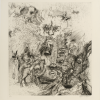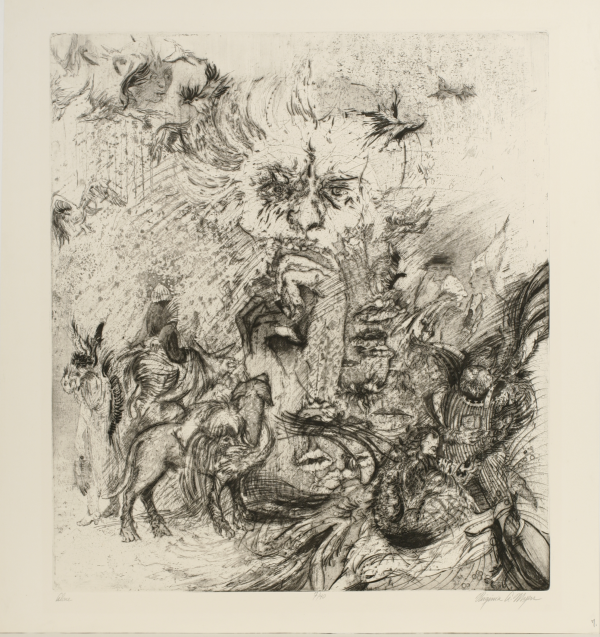Collages of Alone & Belonging
| Grade | 6th Grade, 7th Grade, 8th Grade | Class | Length of Lesson | Approximately 4 - 5 (40 minute sessions) |
| Lesson Title | Collages of Alone & Belonging |
| Unit Title | Individual and Collective Representations: Virginia Myers |
| Unit Compelling Question | What does representation mean? |
| Historical Context: WHO: Virginia Myers WHEN: 1927-2015 WHAT: American Printmaker FAMOUS FOR: Expert artist, scholar, professor, and inventor of Iowa Foil Printer. IN HER OWN WORDS: ARTIST'S HISTORY: IOWA CONNECTIONS: ARTIST'S WORK: ARTIST'S WORLD: |
|
| Lesson Supporting Question | |
| Lesson Overview | Students will learn about the life and influence of artist Virginia Myers, who was an artist, printmaker, and inventor in Iowa. Using Myers’ artwork, Alone, 1959, as inspiration, students will create a diptych collage. One-half of the collage will be a depiction of what they believe looks and feels like for someone to be alone. The other half will be a depiction of what it looks and feels like to not be alone but to belong. Then students will share the artworks in a peer critique. |
| Primary Sources Used |
|
| Resources Needed | Other Notable Artworks: To Iowa and Molly Brooks, 1959 A Time of Malfeasance No. 1, 1974 A Codex of Our Times, 2014 Online Resources (Used at Instructor's Discretion): FIRST-PERSON NARRATIVE: Virginia Myers VIDEO: Learn about the Iowa Foil Printer & the hot stamped foil print-making process VIDEO: Hot Foil Printing - How It Works VIDEO: Intro to Printmaking VIDEO: How to Make a Collage - Materials, Composition, and Tips Materials: Access to internet Print/Copy/On Screen image of artwork Alone, 1959 Various papers for collage (magazines, newspapers, colored papers etc.) Various drawing materials Various adhesives (glue stick, white glue, tape etc.) Two separate substrates or backgrounds to create collage on top Full sheet foil sticker paper (optional) Materials for a clear tape transfer technique: clear packing tape, magazine papers, bowl of water (optional) |
| Standard | |
| Lesson Target | Students will analyze and discuss the artwork and life of artist Virginia Myers and her connections to The University of Iowa in Iowa City. ;Students will create a collage diptych with one half depicting what it means to be alone and the other half showing what it means to belong.;Students will share and discuss collage diptychs in a peer critique. |
| Lesson Themes | Innovators, Women's Experience, Visual Arts |
|
| Formative Assessment (How will you use the formative assessments to monitor and inform instruction?) |
Brainstormed list of what it means to be alone, and to belong. |
| Summative Assessment (How does the lesson connect to planned summative assessment(s)?) |
Completed collages and peer reviews. |
| Author | Megan Dehner | Created | Last Edited | ||||
| Reviewer: Teaching Iowa History Team | |||||||
| Lesson Plan Development Notes: Summer Fellowship 2022 | |||||||


